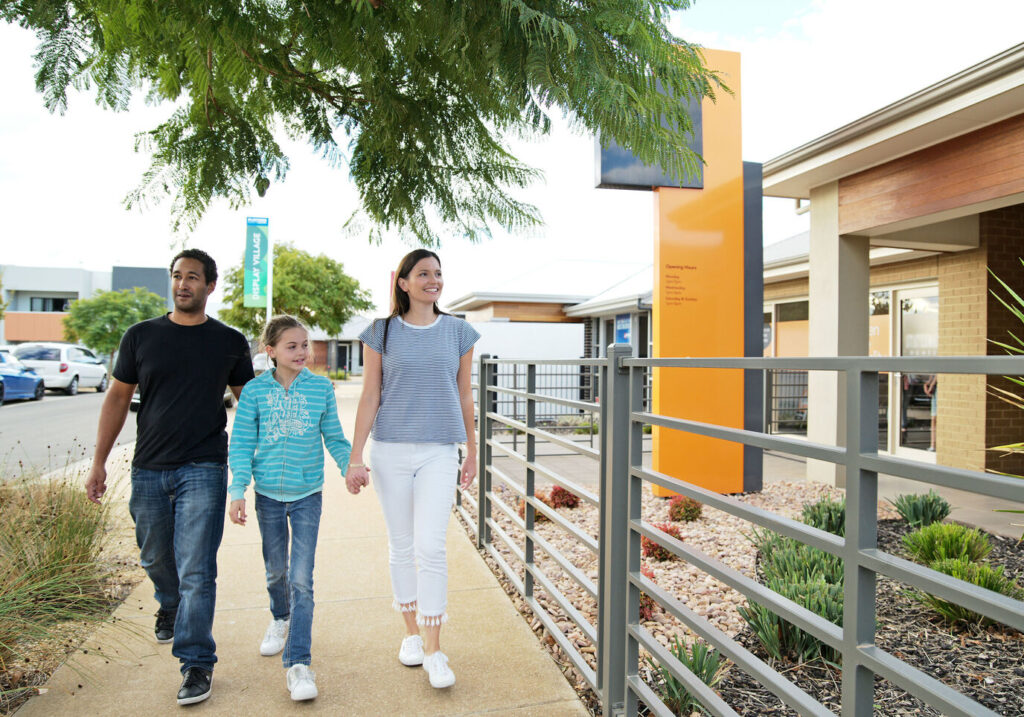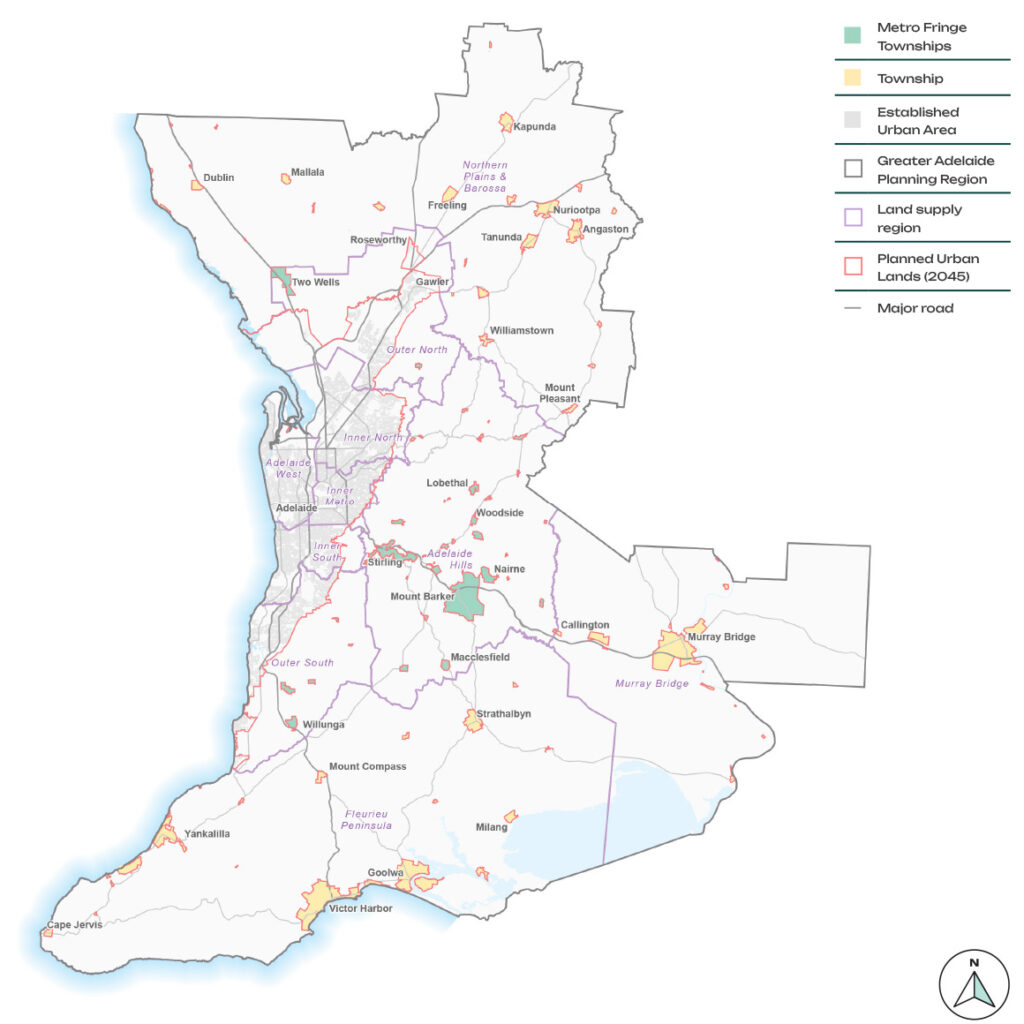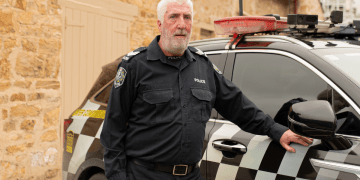Over the next 30 years, Adelaide will be home to 670,000 more people. But where will they all live? Take a look at the government’s plan – and have your say.
From satellite cities to new parklands, the Greater Adelaide Regional Plan is set to transform our capital over the next 30 years. Get involved now and help design the Adelaide of tomorrow
By 2050, Adelaide will be home to 670,000 more people – a 46 per cent increase on today’s population. That means we’ll need 315,000 new homes and 254,000 extra jobs.
The state government’s newly-released draft Greater Adelaide Regional Plan (the Plan) is a 30-year roadmap to guide our region’s growth. It’s our chance to plan for a liveable, prosperous and sustainable Adelaide of the future.
Right now the Plan is a draft, and the state government wants your feedback before finalising it. In its final form, it will guide SA’s future development approvals and infrastructure investments for decades to come.

Why the Plan matters to you
The Plan will shape the Adelaide you’ll be living in through your 30s, 40s and beyond – plus the place your children will grow up in. It will guide housing affordability, job opportunities, green spaces and how our city will cope with a changing climate. That means it’s worth taking the time to have your say on how you want the Adelaide of the future to look.
What exactly is “Greater Adelaide”?
When the Plan refers to “Greater Adelaide”, we’re talking about way more than just the CBD and inner suburbs. The Greater Adelaide Region is massive, covering about 11,000km². Here’s what it includes:
- It stretches from Cape Jervis in the south to Murray Bridge in the east.
- The northern boundary extends to the Barossa Valley and up to Port Wakefield.
- It encompasses the Adelaide metro area, the Adelaide Hills and the Fleurieu Peninsula.
- Major regional centres like Mount Barker, Murray Bridge, Gawler, and Victor Harbor are all part of Greater Adelaide.
In total, this area is home to about 1.5 million people – that’s 85 per cent of South Australia’s entire population.

Where the new homes are heading
Not all parts of Adelaide are growing equally. Here’s the areas in the Plan earmarked for new homes growth:
- Northern suburbs: 113,000 new homes (36 per cent)
- Hills, Fleurieu and Barossa: 57,000 new homes (19 per cent)
- Southern suburbs: 47,000 new homes (15 per cent)
- City/Inner Metro: 46,000 new homes (15 per cent)
- Western suburbs: 39,000 new homes (12 per cent)
- Murray Bridge: 10,000 new homes (three per cent)

Four growth “spines”: Adelaide’s new frontiers
The Plan proposes four main growth corridors or “spines” extending from Adelaide’s centre. These are designed to concentrate future development along existing major transport routes:
Eastern Spine
- Connected by: South Eastern Freeway
- Key areas: Mount Barker and Murray Bridge
- Highlight: Murray Bridge is set to become a major satellite city with up to 23,500 new homes planned.
Southern Spine
- Connected by: Victor Harbor Road and Alexandrina Road
- Key areas: Victor Harbor (6,600 new homes) and Goolwa (3,200 new homes)
- Highlight: Capitalising on the Fleurieu Connections projects to improve road links.
North-western Spine
- Connected by: Port Wakefield Highway
- Key areas: Two Wells (10,800 new homes) and Riverlea (6,100 new homes)
- Highlight: Significant expansion north of Adelaide’s current boundaries.
North-eastern Spine
- Connected by: Northern Expressway and Gawler rail line
- Key areas: Kudla (13,400 new homes) and Roseworthy (33,300 new homes)
- Highlight: Creation of a new Northern Park Lands, a 500+ hectare linear park.

Urban infill: Making the most of what we’ve got
The Plan isn’t just about expanding outwards. It’s also looking at smart ways to use the space we already have. This is called “urban infill” – basically, it means building new homes in established suburbs, often by replacing old houses with apartments or townhouses, or by developing vacant or underused land.
The Plan earmarks 14 state government-led strategic infill sites, including Thebarton (former brewery), Keswick (Le Cornu) and Kent Town/Stepney. It has also identified 60 local council-led infill investigation areas for possible redevelopment within established urban areas.
The areas near “urban corridors” The Parade, Unley Road and Prospect Road are also targeted for denser housing. Because these are busy main roads with reliable public transport, the Plan suggests they’re where we should build more apartments and townhouses.
Where the jobs will be
With more people comes more work. The plan aims to create 254,000 new jobs across the region, identifying an additional 3,000 hectares of employment land, mostly in the Outer North and Murray Bridge regions. This includes industrial hubs, commercial centres, mixed-use areas (where people can live and work), innovation precincts (think tech startups), and agribusiness facilities.

Going green (literally)
The Plan sets an ambitious target of increasing tree canopy cover in metro Adelaide from 17 to 30 per cent by 2051. It also introduces the “Greater Adelaide Park Lands” concept, which includes:
- A new Northern Park Lands
- Greenways: Linear parks connecting suburbs
- Regional parks: Large parks serving multiple suburbs
- Urban forests: More trees in existing suburbs and new developments
- Coastal reserves: Protected areas along our beaches.
The Plan’s strategies to make our city more climate-resilient include water-sensitive urban design (using plants and landscaping to manage stormwater), encouraging energy-efficient buildings and planning for increased flood and bushfire risks.

A digital revolution
The Plan will be Australia’s first fully-digital capital city regional plan, offering interactive mapping, real-time updates and improved accessibility features. This means you’ll be able to monitor online what’s being planned for and built in the areas where you live and work – as well as see how their population and job opportunities are changing.
Your turn to shape the future
Share your thoughts about the Plan by 4 November:
- Visit South Australia’s Regional Planning Portal.
- Attend online briefings or workshops (register here).
- Take the online feedback survey
- Complete the online submission form
- Email a submission to plansasubmissions@sa.gov.au.
More information on the draft Greater Adelaide Regional Plan and the consultation process is here.
















